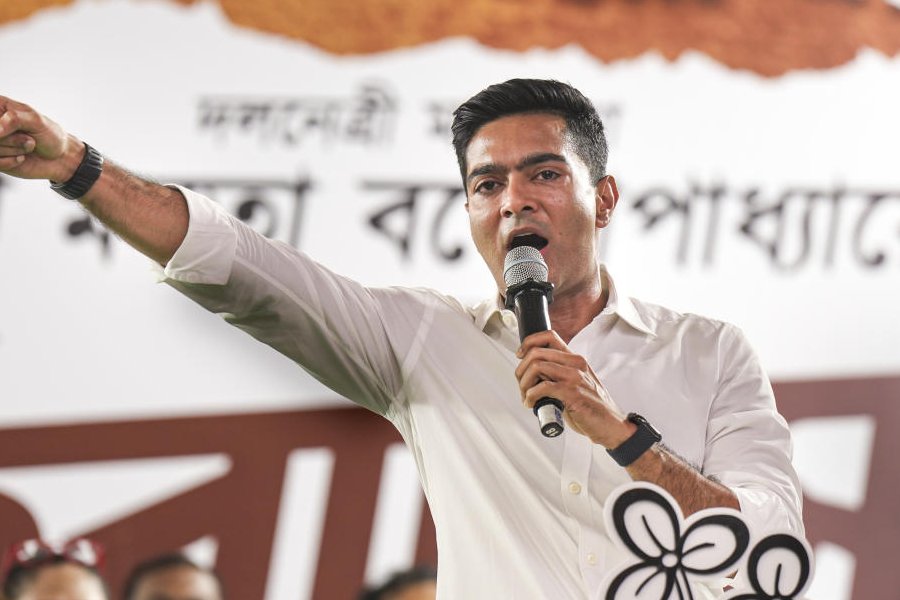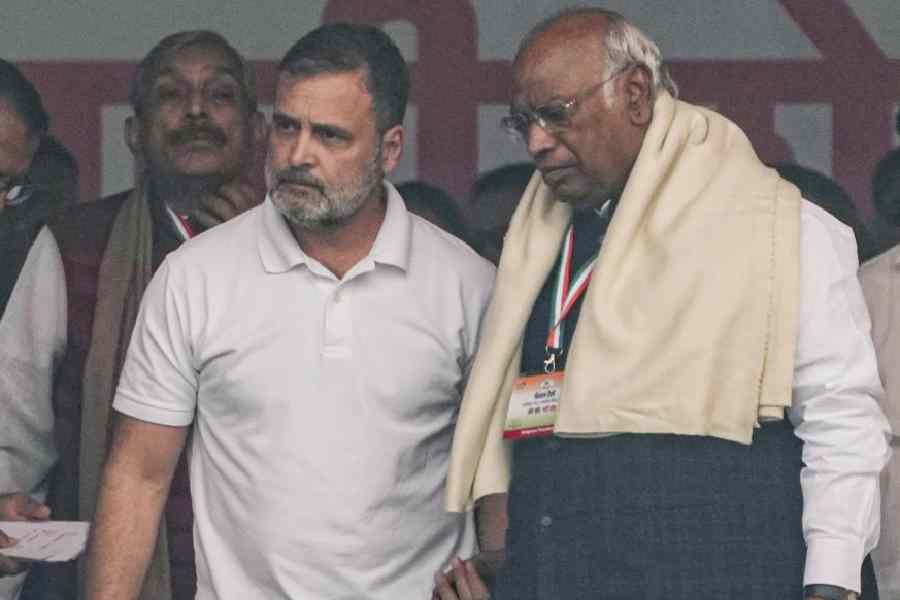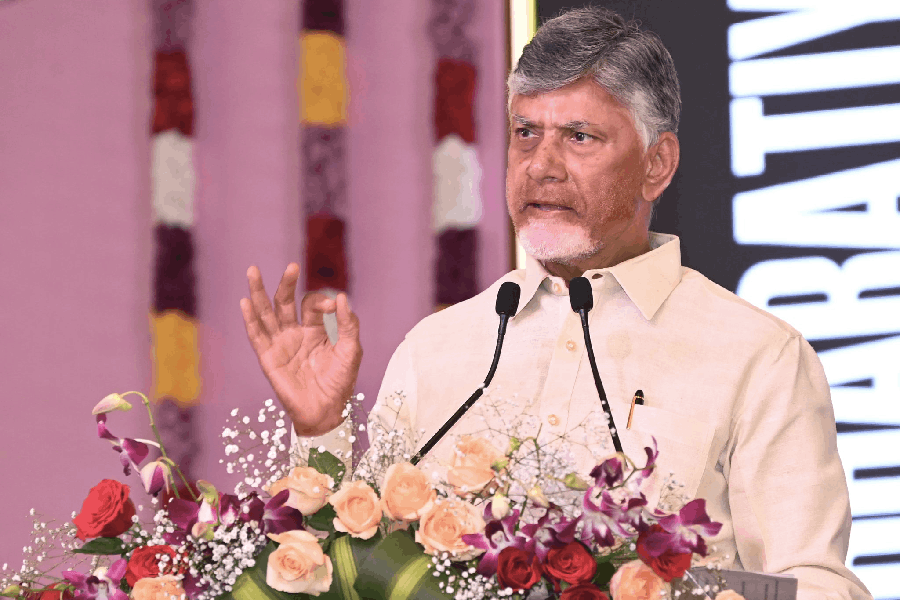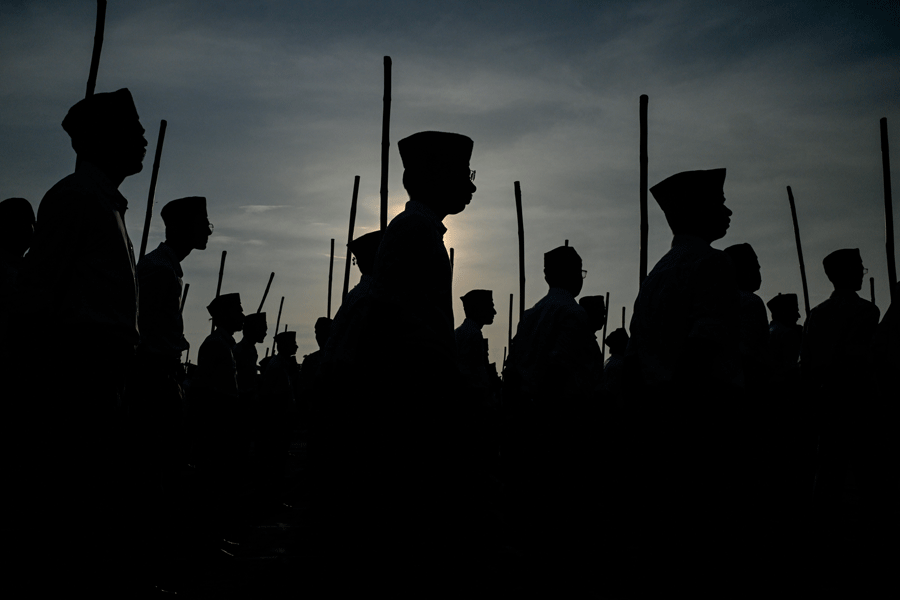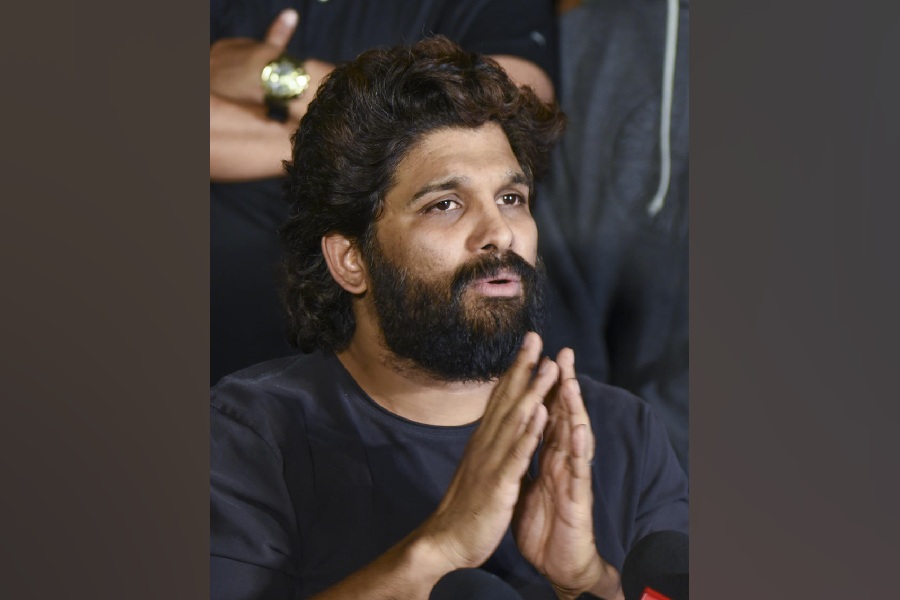 |
| A baby holds an Egyptian flag at Tahrir Square in Cairo on Saturday. (Reuters) |
Revolutions don’t reserve the right to admission; everyone’s welcome, including those they rise against, the more the merrier. Revolutions, as opposed to coups d’etat, are driven not by the dark deceit of a few but by the daring embrace of the many. They aren’t hatched in the shadowy backrooms of power, they are audacious things that roam the streets and arrive to explode at power’s guarded precincts: a palace, a prisonhouse, a wall, a ship deck, or, as in Egypt the past fortnight, a townsquare. They can’t be a crafted plot, they are a propulsion force laser-guided by the unjust nature of things. Revolutions don’t demand rights to admission. They erupt, the rest follows.
On my fourth evening at Tahrir Square last week, I lapsed into an error of judgement induced by critical gaps in my understanding of how revolutions work. There isn’t a standard guide anywhere on revolutionary symptoms and practices, of course, that reporters tasked to the ringside can pack in their in-flight bags; there probably can’t be.
Revolutions are not science, they are, if anything, a work of art in progress. But art is probably more demanding of understanding and interpretation because formulas don’t fit. Between one revolution and another very little fits. Mikhail Gorbachev survived to become extant world statesman, Nicolai Ceaucescu ended up shot and strung on a pole.
On the other hand, between a failed revolution and a successful one, a lot can seem similar. Tiananmen and Tahrir both began with angered youth facing off against tanks in the capital’s heart. They probably rolled over that one man — and much more — who stood in the tank’s path in that iconic photograph from Tiananmen; at Tahrir, human bodies rolled into the treads of tanks to immobilise them.
On that fourth evening of mine at Tahrir, I slipped between the cracks of my frail and fractured understanding of what makes revolutions and what does not.
After a series of rather raucous and rousing vigils, Tahrir had collapsed on itself. The vigil had thinned, the cry for Hosni Mubarak’s head had become less a strident demand, more a murmured hope, the energies suddenly seemed to be evaporating in the smoke from little fires hardcore settlers on the square had lit to keep themselves warm.
A tour around downtown areas hugging Tahrir and other parts had revealed a Cairo in resumption of routine. Banks had opened and immediately been swarmed by cash-strapped citizens, high streets were being swept, Mubarak’s despised police were back on stations, commerce was crackling to life — eateries, fashion and automobile showrooms, garages, software stores and cybercafes. Cairo looked in most parts a normal city, getting back to business, seemingly at a remove from Tahrir’s ferment. The Mubarak regime, meantime, was eagerly issuing clues to being in control.
It had, among other things, managed to seduce a good section of the protesting opposition, including the Muslim Brotherhood, to talks on “discussing ways” to sort out the crisis.
What manner of revolution opens dialogue with a regime it seeks to overthrow, I remember wondering to myself as I walked back across the Nile from a depleted Tahrir to my hotel. What sort of revolution exhorts its intended target to show “genuine intent” rather than exploiting its fallacies to tighten the noose around it? This was almost the politics of Three Ps the Congress abandoned at the turn of the 20th century in its fight against the Raj — prayer, pleading, petitioning.
Another, more contemporary, image floated up to confound my conundrum: Mahendra Singh Tikait’s extended sit-in at the India Gate lawns in the late 1980s. Tikait had summoned more numbers than I had seen sprawled across Tahrir that evening. It was a seamless bivouac from Boat Club to Amar Jawan Jyoti, acreage after acreage of rural west Uttar Pradesh transplanted in mid-New Delhi.
They’d brought their rations of jaggery and cane and wheat flour, they’d carted earthen ovens and tents in tractors, they’d established a defiant Gaullish village on the capital’s central vista. Yet, after days of warning he wouldn’t leave until he’d shaken Delhi’s foundations, Tikait eventually did his deal and ordered the protest to disband.
Had Tahrir become one such sit-in? A demonstration rather than a revolution that would eventually extract concessions and peter away?
The only revolution that most of my generation ever came close to witnessing first hand --- and very nearly missed --- was the JP-led upsurge against the Indira-Sanjay Emergency during the mid-1970s. “Total Revolution”, JP had christened it and he churned it whole enough to sink the Emergency down its eddy.
But for all the sinister horror we still associated with the Emergency in our collective minds, Indira’s was a matron’s gentle rap on the knuckles compared to what unfolded in Egypt under Hosni Mubarak.
The Emergency’s jail terms were mostly benign internments not the torture halls of Mubarak’s secret police, the Mukhabarat. Indira censored the press; Mubarak often murdered it, with clubs or with commerce. Dissent against the President was crime by the statute books, which his men were often in too much of a hurry to invoke. Sanjay rampaged about but the worst he probably did was to have people’s veins snipped, not their throats. They were life-giving veins, for sure, but “nasbandi” didn’t take lives, as Mubarak’s apparatchik did wantonly.
As children, we held daily sit-ins against the Emergency in our neighbourhoods in Patna. They were more like boys’ days out because schools were in closure. But we were able to shout “Indira-Sanjay murdabad” and sound the Emergency’s death rattle every evening at nine, in a concerted act of beating telegraph poles with bits of pavement rock. Nobody interfered, much less made a threat. In Egypt, generations were schooled in revering, and fearing, Mubarak.
The Emergency was rolled back by Indira in 19 months; Mubarak ruled three decades.
This isn’t to make light of the Emergency’s many and outrageous excesses; this is merely to draw the contrast between what we consider elements of “dictatorship and fascism” we feel entitled to complain about, and what other societies live with without opportunity to let out a squeak of protest.
We haven’t lived nailed to the wall decade after decade; we probably can’t read the depths of anger and frustration; we probably also don’t fathom too easily why, at the faintest glimmer of correction, how desperately people will hang on to it as their last chance to change their circumstances, why they will make it a fight to the finish. Demands in dispensations like Mubarak’s Egypt don’t get addressed by protests and demonstrations, or even sustained sit-ins; it must be a revolution or a return under the regime’s vengeful heel.
Driven by the doubts of my conditioning, I went round early to Tahrir the next morning to ask, and I was struck by the unmoved determination of people to stay unto the finish. I had made a few acquaintances, people I had run into day after day and would return to, if for nothing, for the fact that they spoke English and could articulate and mediated for me the underpinnings of what was a remarkable unfolding.
The determination and rock-jawed will, yes. But there were other striking qualities to the enactment. There were tanks ringed around Tahrir Square and platoons of soldiers kitted out to subdue and kill. Yet between the protesters and their minders existed, to the very last, a bonhomie almost too natural to be true; it was as if they were in an unwritten conspiracy with each other. They shared meals and jokes, they let them into each other’s marked territories; even when it seemed only reasonable that the jawans should intervene --- as when they were subjected to taunts in tenser moments --- a bizarre, and happy, restraint held.
The other was how calm the uprising had been, indeed how joyous and free of spirit. For so many anti-regime people to be gathered in so many towns across Egypt over so many days, the violence, and the toll, the revolution took was negligible.
“You don’t understand,” Mozn Hassan, a lawyer and activist I had grown to know, told me that morning, “the air is so easy and joyful because Egyptians have never been here before. Just to be able to come out, assemble and say whatever heck you want to without being punished for it ---that’s freedom, that is to breathe, we are doing that for the first time in our lives. We could never utter a word about Mubarak, now we are asking him to go, his whole regime to go, his son Gamal is already gone, this is already a revolution in our lives. And having come all this way, we cannot go back to what was, never, at no cost, we cannot agree to stop breathing.”
Three days later, when Tahrir, and Cairo, and Egypt, erupted in Mubarak’s final meltdown rites, I understood the demonstration had become a revolution because it was about that simplest and most fundamental of things: breathing free.


